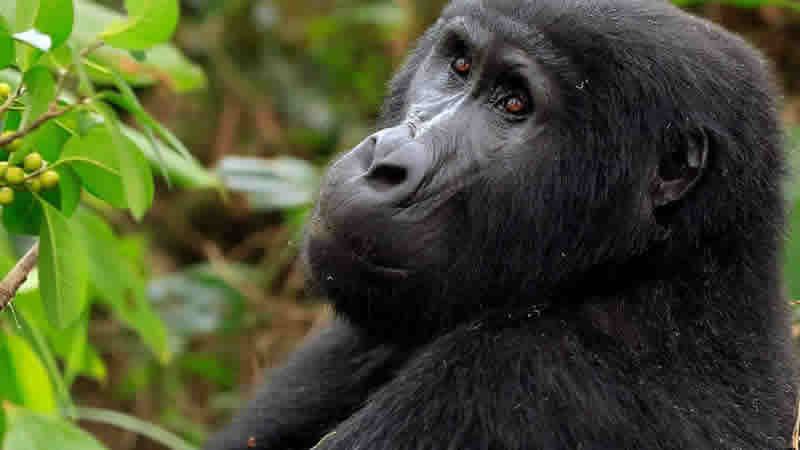All the 5 Different Types of Gorillas in Africa: (With Photos 2024)
All 5 Different Types of Gorillas in Africa are 1. Western Lowland Gorilla, 3. Mountain Gorilla, 4. Eastern lowland gorilla. All 5 Different Types of Gorillas in Africa are excited to trek in the green forest vegetation habitats in Uganda, Rwanda and Dr Congo.
How many gorillas are in Africa
Types of Gorillas in Africa: (5 Different Types of Gorillas), Eastern Gorillas, Mountain Gorillas. Types of Gorillas in Africa: (5 Different Types of Gorillas) are your Best Adventure Encounter in Africa at Volcanoes National Park Rwanda, Bwindi Forest National Park & Mgahinga National Park in Uganda and Virunga National Park & Kahuzi Biega National Park in DR Congo.
What are the 4 types of gorillas
Types of Gorillas in Africa: Gorilla Trekking Species in Africa include Eastern, Western & Mountain Gorillas. Types of Gorillas in Africa: Gorilla Trekking Species in Africa are..
Across the world there are two species of Gorillas and these are the Western gorillas and the Eastern gorillas as highlighted below. Before we jump into the details of the types of gorillas, et me give you a brief summary of what a gorilla is.
What is a Gorilla?
Gorilla(s) are generally gentle giants that live within the equatorial parts of the African continent. They have several human-like emotions and characters and behaviors like sadness and laughter, and unique about them is the fact that they share about 98% of their DNA with humans, which makes them similar to chimpanzees man’s close living relative.
Characteristics of Gorillas of different types gorillas
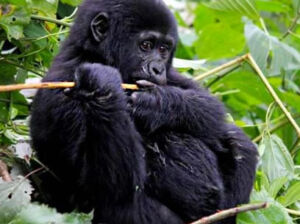 Gorillas are the largest great apes, with thick bodies generally comprised of wide chests and strong shoulder. They have very hairy faces with small eyes and when it comes to their limbs they have hands that are very similar to man. They stay in groups as families of about 5 to 15 members while others may have as many as 40 individuals in a single family. Each family is led by a male adult ‘silverback’ and it is he that forms the social life of the family basing on his bond with the females. The female gorillas sexually mature at around 7 or 8 years though the male may take longer and these give birth to normally one baby (though incidences of twins have been recorded) and this happens every 4 to 6 years.
Gorillas are the largest great apes, with thick bodies generally comprised of wide chests and strong shoulder. They have very hairy faces with small eyes and when it comes to their limbs they have hands that are very similar to man. They stay in groups as families of about 5 to 15 members while others may have as many as 40 individuals in a single family. Each family is led by a male adult ‘silverback’ and it is he that forms the social life of the family basing on his bond with the females. The female gorillas sexually mature at around 7 or 8 years though the male may take longer and these give birth to normally one baby (though incidences of twins have been recorded) and this happens every 4 to 6 years.
Types of Gorillas (All 5 Different Types of Gorillas in Africa)
There are 6 types of gorillas namely;
-
Eastern gorilla species
Eastern gorilla species comprises of two (2) sub-species and these are the mountain gorillas (which are estimated to be just over 1063 according to a survey that was conducted in 2018 by the greater virunga trans-boundary collaboration together with the ministry tourism wildlife and antiques of Uganda), and the eastern lowland gorillas (which are estimated to have dropped in numbers to nearly 50% from the 17,000 population back in the mid-90s according to estimates given by scientists).
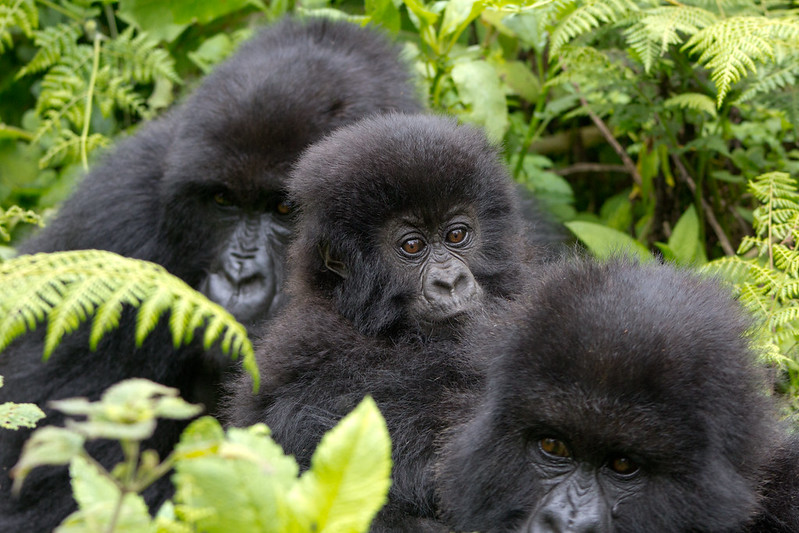
-
Cross River Gorillas
These mainly live within the rainforests of Nigeria and Cameroon. when standing on two legs they can reach a height of between 4 to 5.5 ft and they can grow to a weight of as much as 450lbs. it is estimated that the area in which these this sub-specie of gorillas exist covers about 3,000 square miles and today the entire region is densely populated by people who unfortunately clear this natural habitat to create room for human agricultural activities, livestock rearing and even to harvest timber from the forest. The small population of the Cross River gorillas is today caused by the severe poaching that takes place within this area. Unfortunately, the Cross River Gorilla today is ranked as one of the critically endangered wildlife species. On the bright side, the governments of Nigeria and Cameroon, in conjunction with WWF and other wildlife conservation organizations, are working hard to put into place measures that protect this natural habitat considering that this gorilla habitat crosses borders into both Nigeria and Cameroon. Continued sensitization and awareness programs are ongoing in these two countries especially to inform the local people living close to these sanctuaries the advantages of conserving and protecting this sub species.
-
Mountain Gorillas
This subspecies mainly lives within the densely forested areas and survives at high altitudes between 8000 feet and 13000 feet. These can only be found in just three countries across the whole world and these include: the Bwindi impenetrable Forest of Uganda as well as the Virunga mountains that’s cross borders into Uganda’s Mgahinga National Park, Rwanda’s Volcanoes National Park and the Virunga National Park in the D. R Congo. While standing on two feet these gorillas can attain a height between 4 ft to 5.5 ft, and an adult Gorilla may grow to a weight of 480 lbs.
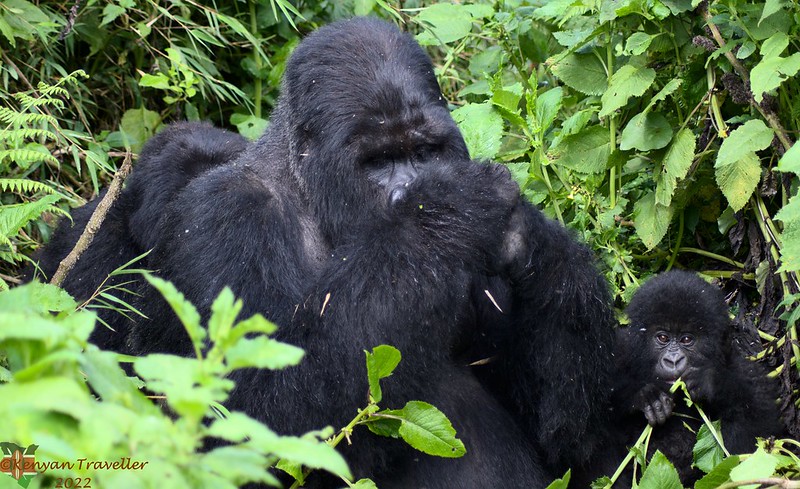
Mountain gorillas generally have a lot of far and a very thick coat, an adaptive characteristic with enables then to survive high in the cooler parts of the forested areas. With humans encroaching on their natural habitat, these mountain gorillas we’re forced further deeper into the forest, where the temperatures and climatic conditions are generally harsh. Today this subspecies is also considered critically endangered with just over 1,000 mountain gorillas in the whole world, a number which has in fact risen from 850 back in the 1990’s to what it is today. Big thanks to the great conservation work being done by the governments of Uganda, Rwanda and D.R Congo that has seen this increase in mountain gorillas over the past few years.
-
Western Gorilla Species
On the other hand the Western gorilla species also comprises of two subspecies and these are the Cross River gorillas which are estimated to be between two hundred (200) and three hundred (300) in number, as well as the Western lowland gorillas which are estimated to be more than 100,000 in population. This in fact is the most widespread and popular sub-species of gorillas in the whole world.
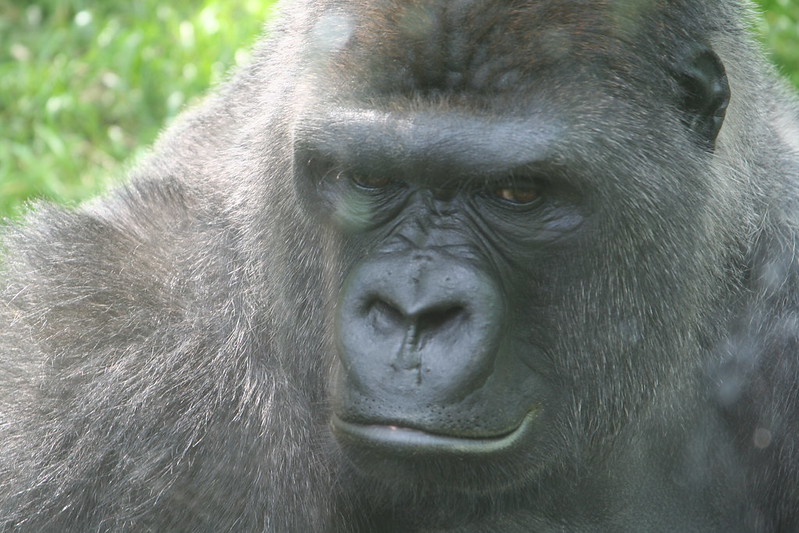
-
Eastern Lowland Gorillas
This sub-specie can be found within the Democratic republic of Congo inhabiting the lower areas of the tropical rainforests in the eastern part of the country. Due to human encroachment, the size of their habitat has reduced from its initial size of 8,000 square miles to just 5,500 square miles occupying approximately 13% of what was previously original habitat. The eastern lowland gorilla has a squat body, short muzzle and large hands. When standing on two feet they can also reach a height between 4 ft to 5.5 feet with an average body weight of 450 lb.
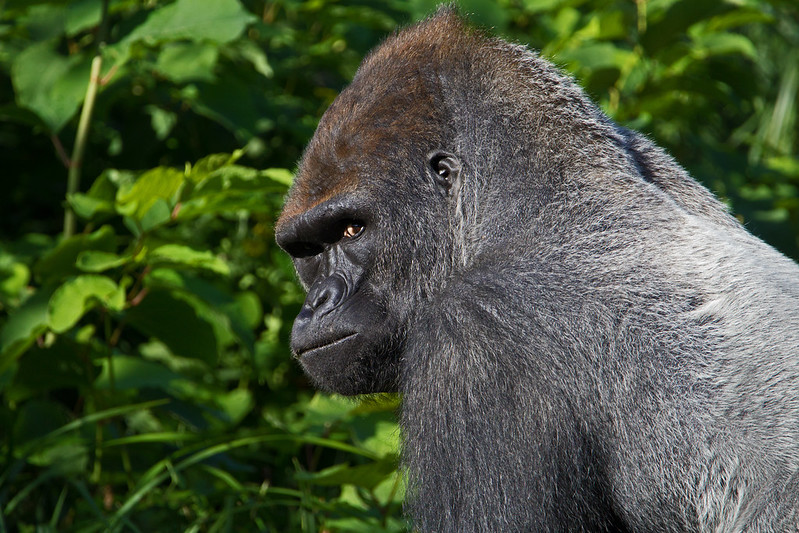
-
Western Lowland Gorillas
This gorilla subspecies is the most widespread and has the largest population of individuals. These are found within Congo and Cameroon area and they live in different habitats including rainforests and swamps. Physically they are smaller compared to other gorilla subspecies, with wider skulls, smaller ears, brown grey coats and reddish brown chests. Their exact population is not known since a number of them leave within the depth of the verdant Forest within their habitats. Nonetheless, they are also considered an endangered species with poaching and encroachment on their natural habitat being the largest challenge they face.
Similarities and Differences between the eastern gorillas and western gorillas (All 5 Different Types of Gorillas in Africa)
Both species of gorillas live in the tropical as well as subtropical area of Africa; however one would wonder what is the major difference between these two gorilla species? Well the biggest difference between these two is the sound they use while communicating as well as the size of their nose. In addition, the Eastern gorillas generally appear bigger in size compared to their Western counterparts.
Challenges affecting All 5 Different Types of Gorillas in Africa
The greatest challenge the gorilla species have suffered is the loss of their natural habitat due to human activities such as infrastructure development, agriculture and clearing fielding for grazing livestock, to mention just a few that all result into deforestation. In addition poaching of the forest giants for their meat as well as for illegal trade on the black market

